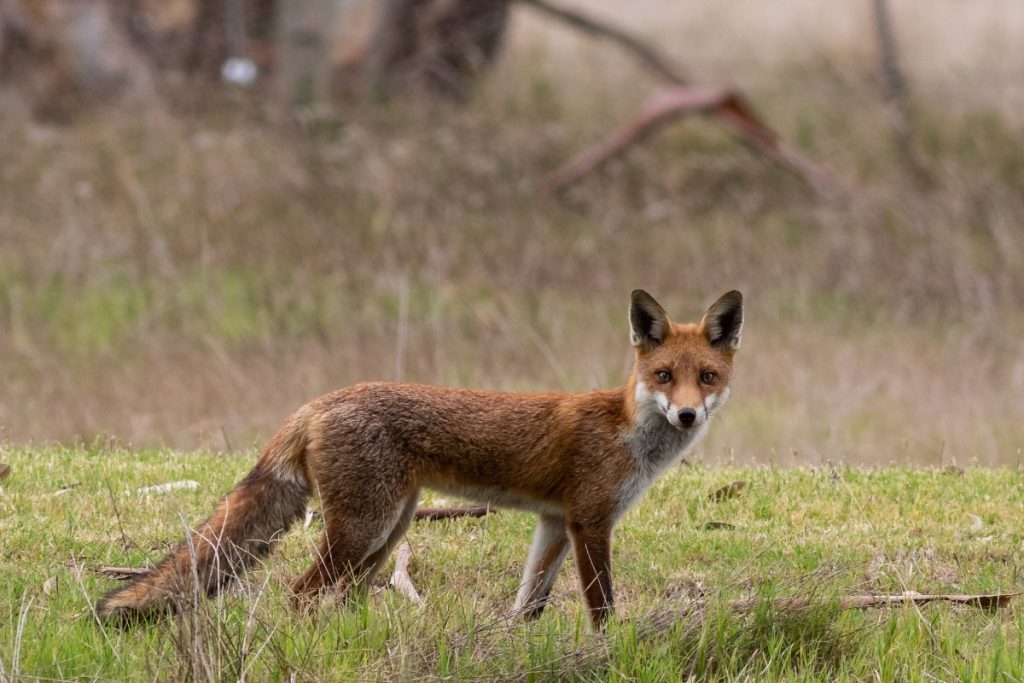
What can we do about Foxes? – Adaptability and Control
• Foxes have survived throughout the world despite almost constant attempts by humans to reduce numbers or to eradicate them.
• Foxes thrive in many suburban areas and have even adapted to life in the centre of some large cities.
• Nevertheless, it is possible and essential in specific areas to protect livestock and native fauna from fox predation.
• Control methods include, exclusion fencing, trapping, baiting and shooting.
Leschenault Biosecurity Group can assist with fox control within our operational area, including:
• Advice specific to circumstances at hand
• Loan of surveillance cameras to verify fox activity (sometimes suspected fox activity is actually verified as feral cats, quolls or other)
• Trapping advice (watch LBG Fox Trapping Guidance video)
• Loan and set-up of fox traps
• Restricted Chemical Products Permit Application Assistance & Fee Waiver for baiting purposes
Best practice methods for controlling foxes can vary. CLICK HERE for WA DPIRD Fox Control Factsheet
The red fox is a native of the northern hemisphere and found throughout most of Europe, Asia, North America and the northern coast of Africa. Red foxes are members of the dog family (Canidae), which includes dogs, foxes and wolves. They range in colour from pale red to deep reddish brown, the underparts whitish, and the lower part of the legs is usually black. The tail is bushy and almost always tipped with white or black hairs. Foxes were introduced into Australia in 1855 from Britain to Victoria for sporting purposes. Foxes are now widespread across the majority of Australia. They can be found at higher density in more populated areas, and areas where they have access to food all year round. Each fox occupies a home range, which can be from 280-1600 hectares in size. As well as being a serious threat to agriculture, foxes are responsible for the decline of many native Australian species. Foxes tend to eat whatever is readily available to them. The make-up of their diet in a particular area varies seasonally and depends on which foods are most available at the time. CLICK HERE for WA DPIRD Factsheet on the Red Fox in Western Austraila
Foxes active mainly at night. Foxes are nocturnal hunters and may travel up to 10 to 15km per night. They typically rest during the day in a den, often an enlarged rabbit burrow, or in sheltered sites such as rock piles, hollow logs, or dense thickets or undergrowth. A fox may use several resting sites within its home range and does not necessarily return to the same site each day.
Breeding Season and Related Behaviour Foxes breed once a year, in June or July, with cubs born August or September in a dry, sheltered den. The dog fox (male parent) assists the lactating vixen by bringing in food for her and the cubs. Cubs are weaned at 6-8 weeks and begin to leave the den at 10 weeks. Young foxes can hunt for small mammals from 12 weeks of age, and most become independent at 5-6 months old. During the breeding season foxes will reduce their roaming, and constantly return to the same den, and when the cubs become old enough to set out alone, they have been known to be more careless than adults and thus over shooting around February has been known to be more successful than other times of year. Each fox occupies a home range, which can be from 280-1600ha in size.
Got chooks? Keeping chickens safe from prowling predators is a top concern for all chook owners in our area. You can find some great ideas for protection from predators like foxes and snakes that pose a threat to your chicken coop, day and night at: The Ultimate Guide Chicken Coop Predator Prevention
Please report fox sightings/issues as soon as possible directly to Leschenault Biosecurity Group.
If you are within the LBG operational area, please contact us directly with information about fox sightings, as soon as possible and with specific location details if possible. We often learn about sightings that have been posted on social media, but foxes live up to their reputation of being very cunning and they have a large area of roam, so this doesn’t allow for timely and effective follow-up. To best enable effective strategies for trapping foxes, we urge residents to contact us directly, ideally with specific locations of a few sightings within a community, to help determine probable fox “route” for setting up set-up surveillance camera(s), hopefully, ultimately leading to effective trapping.
Contact Leschenault Biosecurity Group: e-mail: info@lbginc.org.au; phone: 0477 049 967

Recent Comments